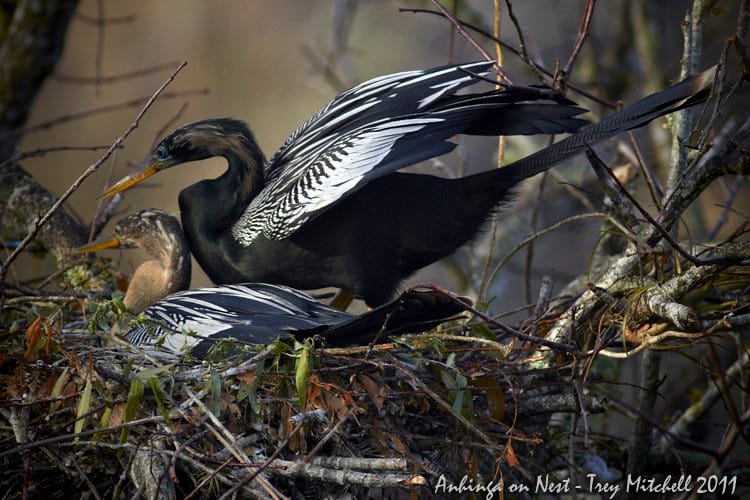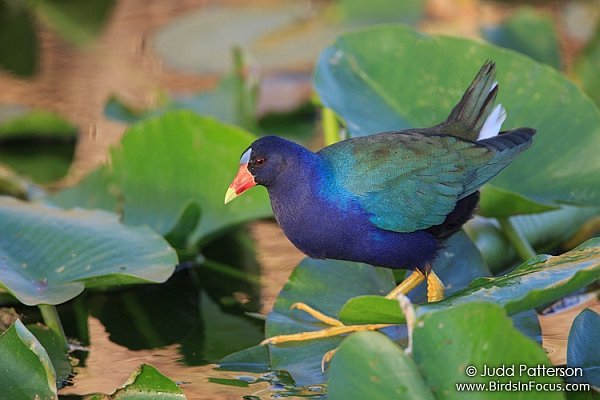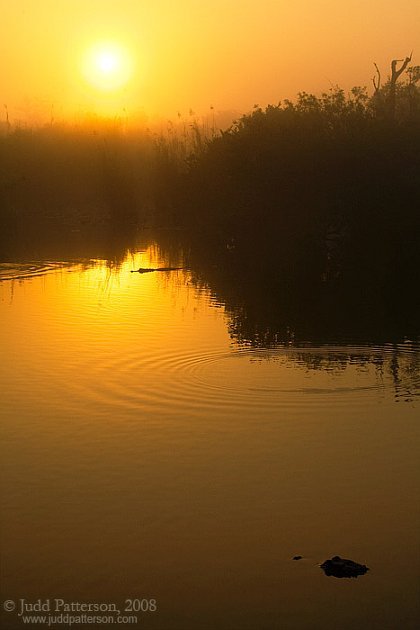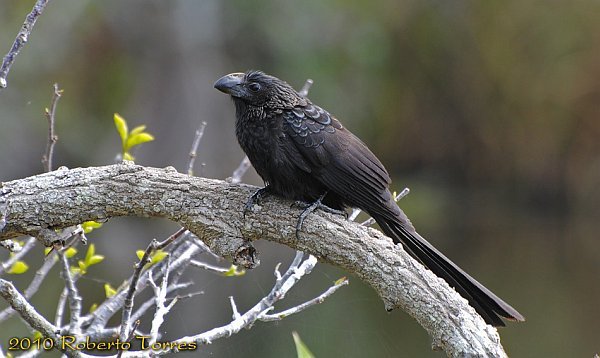
Every year from around January through the end of March, Anhinga Trail in Everglades National Park comes alive as water levels throughout the park drop and force birds to concentrate around more permanent water sources. Well known to tourists who visit the trail by the thousands every year to see their first wild alligators, the site is generally passed off by the serious birder as having little potential of seeing something truly special — just close views of herons, egrets, and ibis. I challenge that false notion and welcome those to visit Anhinga Trail in late winter and see one of the great wildlife spectacles of Florida.
A late winter dawn at Anhinga Trail is truly a feast for the senses if one arrives under the cover of night and waits patiently for the sun to rise. The air can either feel damp and musky or cool and crisp, depending on the strength of cold fronts working their way down the peninsula. Along the trail, the barking duets of Barred Owl and whistled trills of Eastern Screech-Owl slowly diminish and give way to the wailing rattles of Limpkin and raspy notes of King Rail as sunrise draws closer. Suddenly, the entire trail system comes alive as birds begin their day. Hundreds of both Glossy and White Ibis commute overhead, along with Great and Snowy Egrets, Little Blue and Tricolored Herons, and Black and Turkey Vultures. A flock of Red-winged Blackbirds, over a thousand strong, fly overhead in several waves towards their feeding grounds. Snail Kite may also be spotted leaving their roosts near this trail during this time of year. While all these birds are commuting to their feeding grounds, Black-crowned Night-Herons change shifts, barking out their ‘quoks’ as they head to their roosting areas.
On the ground, downy white Anhinga chicks beg for a meal of fish from their parents only a few feet from the boardwalk, always nervous Belted Kingfishers rattle and chase each other to establish who gets the best fishing spots for the day, and gaudily colored Purple Gallinules furtively peck at green tidbits in areas of thicker vegetation. If one listens carefully, one can also hear the metallic chinks of wintering Northern Waterthrush and the soft whinny of Sora.
 Various smaller bird species which are not seen easily later in the day also make an appearance at the break of dawn, and and as February turns into March, their singing becomes more incessant and forms a significant part in the wetland dawn chorus — White-eyed Vireo, Great Crested Flycatcher, Carolina Wren, and Northern Cardinal. For those who immediately brush off such a burst of activity as being composed only of more common species not worthy of a special visit, it would be wise to keep in mind that Anhinga Trail has hosted Smooth-billed Ani (a species which seems to be extirpated from the ABA area as a breeding resident), Western Spindalis, and La Sagra’s Flycatcher in the past. In fact, I found a Smooth-billed Ani here in 2010 while watching the busy commotion happening in reverse at dusk!
Various smaller bird species which are not seen easily later in the day also make an appearance at the break of dawn, and and as February turns into March, their singing becomes more incessant and forms a significant part in the wetland dawn chorus — White-eyed Vireo, Great Crested Flycatcher, Carolina Wren, and Northern Cardinal. For those who immediately brush off such a burst of activity as being composed only of more common species not worthy of a special visit, it would be wise to keep in mind that Anhinga Trail has hosted Smooth-billed Ani (a species which seems to be extirpated from the ABA area as a breeding resident), Western Spindalis, and La Sagra’s Flycatcher in the past. In fact, I found a Smooth-billed Ani here in 2010 while watching the busy commotion happening in reverse at dusk!
By around 8AM, I usually head back to my car not only because the bulk of the morning activity is over but also before the throngs of tourists take over, causing the birds to retreat further into the marsh. However, this brief burst of activity sets the tone for the rest of the birding day in the Everglades or southern Miami-Dade as how can one not be impressed by the shear number and variety of wetland birds as a birder? The experience is also bittersweet, as I have often been told that Anhinga Trail used to be much better, that there used to be far more birds, and that such dawn spectacles are only a shadow of what they once were. Regardless, it is still freshwater wetland birding in Florida at its best.
If you would like to make a trip to southern Florida in search of Caribbean specialties, exotics, or general birding, please visit my webpage at www.ecoavian.com or contact me by email at csanchez1230@gmail.com to inquiry about my guiding services.













A wonderful place. I miss it.
Someday I will make it to the Everglades. This post makes the mission more urgent!
Some day, I will make it to Florida. Then, I will make it to the Everglades. And then I will collect indisputable proof the Yellow-crowned Night-herons do not exist. Oh, and of course re-rediscover the Ivorybill while I am there. I mean, SOMETHING’s gotta cover the travel costs, right?
Excellent post, Carlos!
I just came across this blog. It is great. Does the park open sufficiently early to get there for sunrise?
Very helpful! Headed there tomorrow for the dawn birds.